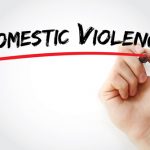Sixty Nine Australian Women Killed Last Year in Domestic Attacks

Carla Hales was killed with an axe in her home in the Perth suburb of Munster on 28 December last year. The 30-year-old woman was hacked to death by Jesse de Beaux, an unknown assailant, who’d was released from a nearby hospital a day earlier after being a voluntary mental health patient.
Ms Hales death brought the number of women killed violently nationally last year to 69. This means that since 2012, the murdered women death toll in this country has reached 506. And the overwhelming majority of perpetrators were men known to their victims.
Take Samantha Fraser, who was discovered dead in her Phillip Island home on 23 July. Found to have died due to “assault injuries”, the 38-year-old mother-of-three was allegedly murdered by her ex-husband Adrian Basham.
And Margaret Indich was the first woman to die last year due to violence against women. Her long-term partner bashed her so viciously on 3 January that the 38-year-old passed away soon after arrival at the Royal Perth Hospital.
However, despite the number of dead, both federal and state governments have for the most part remained silent about this epidemic of gender-based violence, as they prefer to pass laws focused on countering a perceived terrorist threat that hasn’t taken anywhere near as many lives.
Counting, while others fail to
As Australian governments and the media aren’t keeping a tally on women being murdered nationally, the Counting the Dead Women Australia project researchers from the gender equality group Destroy the Joint are.
And while the number of Australian women killed by violence last year is startling, over the seven years the project has been documenting these deaths, the numbers have remained fairly consistent. Indeed, on average, one woman a week is murdered in this country by her current or ex-partner.
Destroy the Joint spokesperson Jenna Price asserts that the reason that violence towards women is so rife in the community is because they’re still not valued in the same way that men are, which is evidenced by gender pay gaps and the disparity in access to opportunities.
And according to Price, the importance of keeping the murdered women tally is due to the media’s habit of focusing on individual deaths rather than the “whole terrible number”. And this lack of attention given to the epidemic as a whole is a major hurdle in being able to approach it as such.
Urgent government attention isn’t there
“Politicians are great at responding to individual deaths and expressing their condolences,” said Ms Price, who’s also an academic at Sydney’s University of Technology. “They’re not good at developing policies and strategies to stem family violence and other violence against women.”
“In the short term, state governments must do more to fund refuges and homelessness services,” she told Sydney Criminal Lawyers. “And the federal government must do much more to support community legal services with actual increases in funding.”
However, the NSW Liberal Nationals government launched the 2014 Going Home and Staying Home reform program, which actually led to a large number of women’s refuges and specialty services to close down, leaving those fleeing domestic violence with a lack of options.
While the federal Coalition government put aside $100 million in October 2016 as part of its Third Action Plan to reduce violence against women. This funding package is designed to change attitudes to and tolerance for violence against women in the community.
But, Domestic Violence NSW chief executive Moo Baulch has described the funding as not even touching the sides.
“We are spending billions of dollars to protect our borders,” Ms Baulch declared last July. Yet “we can’t invest a tiny percentage of that in adequate services to provide support to those living with terror in their homes”.
Inequality leads to violence
“In the long term, governments must support the development of educational strategies around conflict resolution and respect for women,” Ms Price went on. “And even more importantly, governments must work towards eradicating inequality across all areas of Australian society.”
The nation’s peak body for the prevention of violence against women, Our Watch recognises that the primary driver behind violence perpetrated against women is gender inequality. And it’s this society-wide power imbalance that is having a devastating effect.
Underlying the number of women being murdered is the high level of domestic violence that is pervasive throughout the community. In 2016, it was found that Australian police are dealing with around 5,000 domestic violence matters every week.
In 2017, there were 366 victims of domestic and family violence assaults per 100,000 people in NSW, according to the Australian Bureau of Statistics. And 63 percent of the female victims of these assaults reported them being perpetrated by an intimate partner.
Defacing a victim’s memorial
One incident last year that reveals the levels of malevolent sentiment towards women in Australia was the case of the man who defaced Eurydice Dixon’s memorial. Ms Dixon was randomly raped and murdered in a North Carlton park by 19-year-old Jaymes Todd in June last year.
Just hours before 10,000 people were to gather in the park for a vigil for Ms Dixon, police discovered that the memorial site had been defaced with painted offensive symbols. Melbourne man Andy Nolch subsequently confessed over Twitter that he was the vandal.
Mr Nolch claimed that he’d defaced the memorial to draw attention to the fact that it was Todd’s autism that was caused by vaccines, which led to the attack. And he further criticised the mainstream media for making out that the violence could be attributed to men.
The 22-year-old’s lawyer argued in court that the paintings were a “political statement” against feminism and the media. Magistrate Olivia Trumble said this line of argument was incomprehensible and imposed an 18 month community corrections order on Nolch.
Substantial action is overdue
The Bush administration launched the war on terror following the 9/11 attacks. Since then, the Australian government has passed over 70 pieces of counterterrorism legislation. Last year, an encryption cracking bill, as well as a military domestic intervention bill, were both passed under this pretext.
Although, the Global Terrorism Database puts the number of people killed as a result of terrorism on Australian soil since 2014 at 10. This is compared with 506 women murdered since 2012. And the scourge of violence against women in the community has been going on since colonial times.
Sure, domestic violence laws have long been in place in this country. But, it’s clear that with police responding to one incident every two minutes this is not enough.
And the nation’s politicians seem to be more concerned with being seen to be tough on other crimes and clawing their way to leadership positions, than to try and tackle this gender-based violence at its roots.







